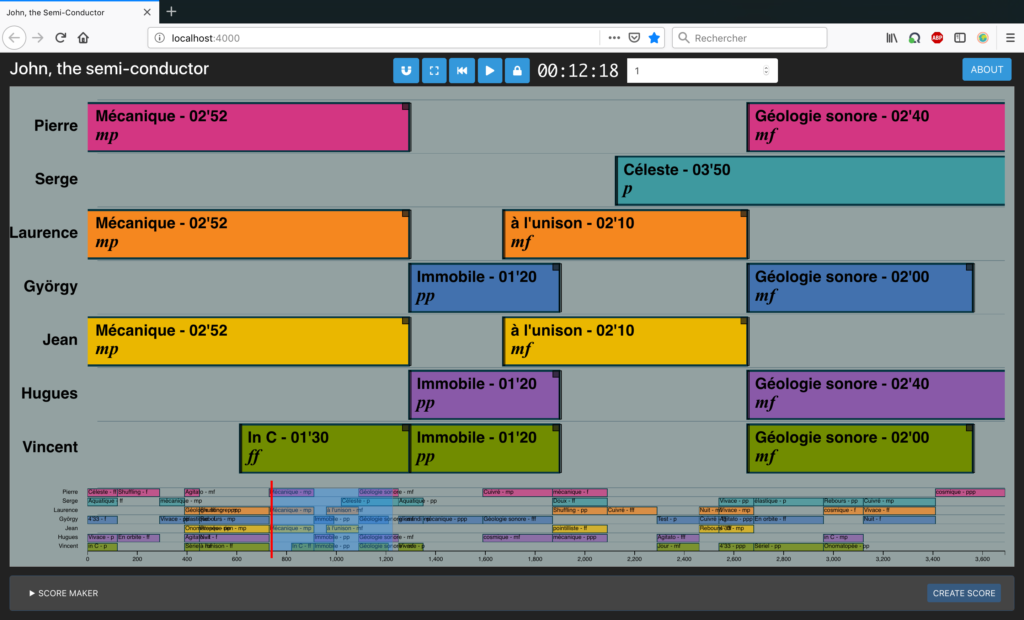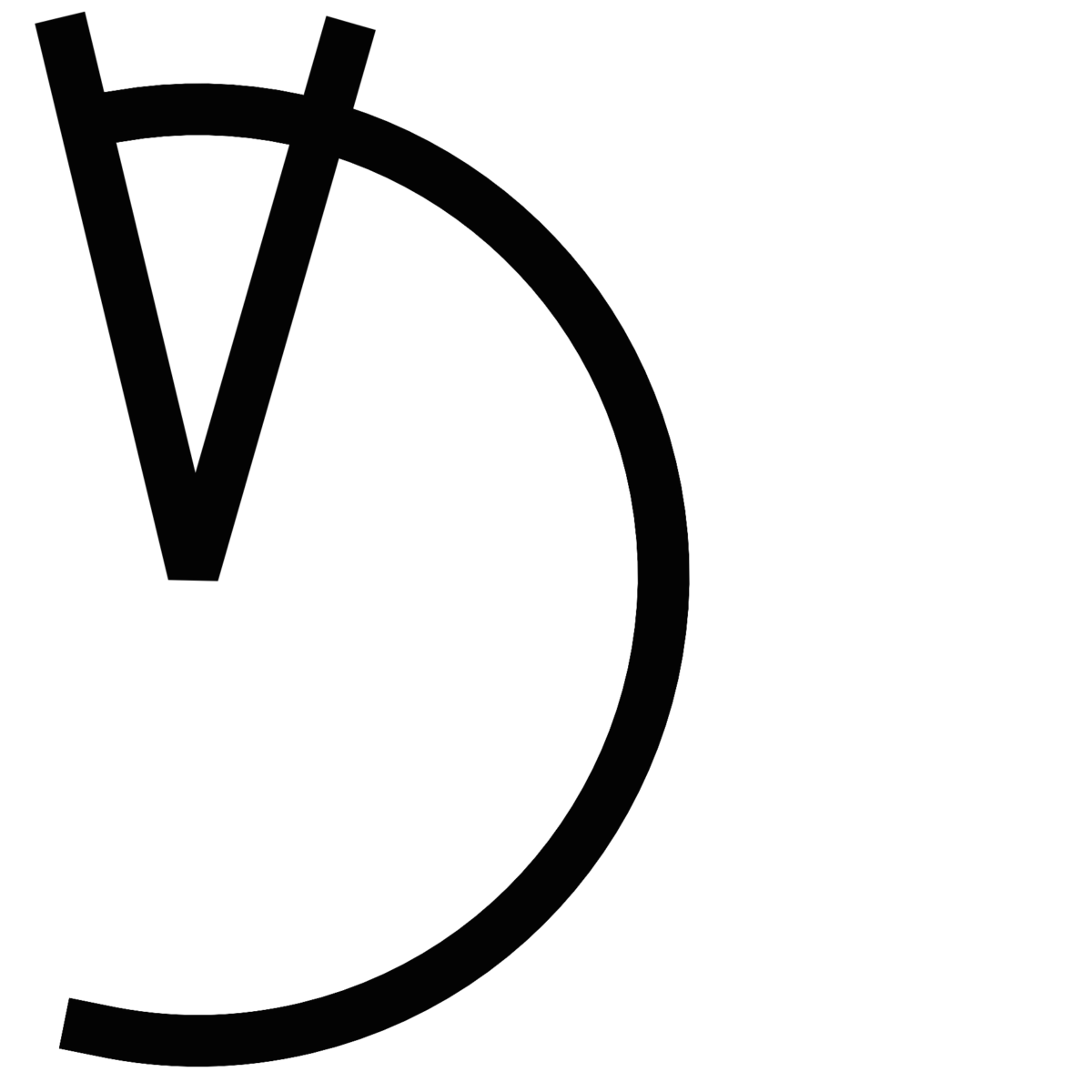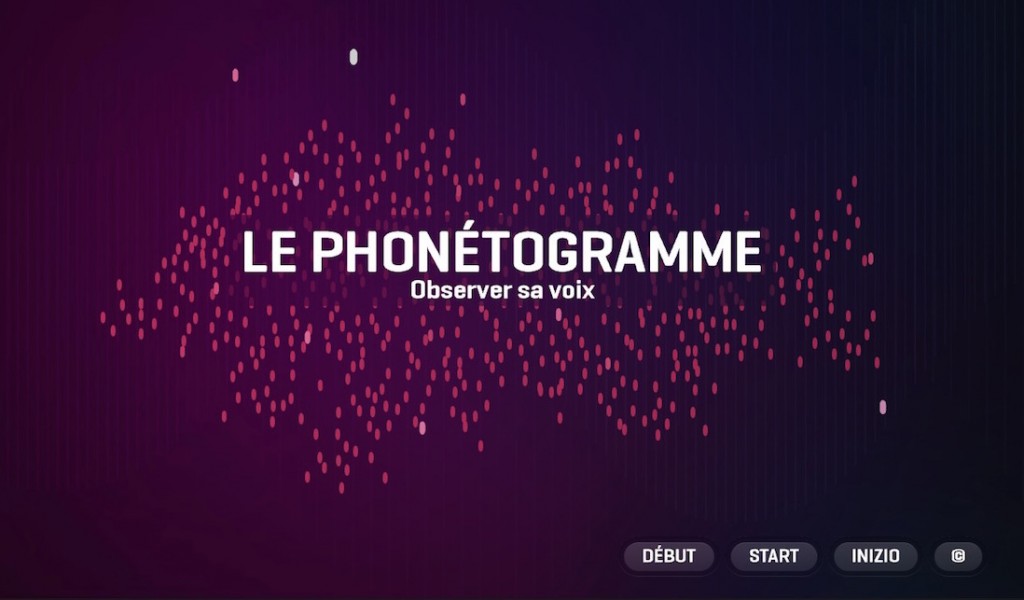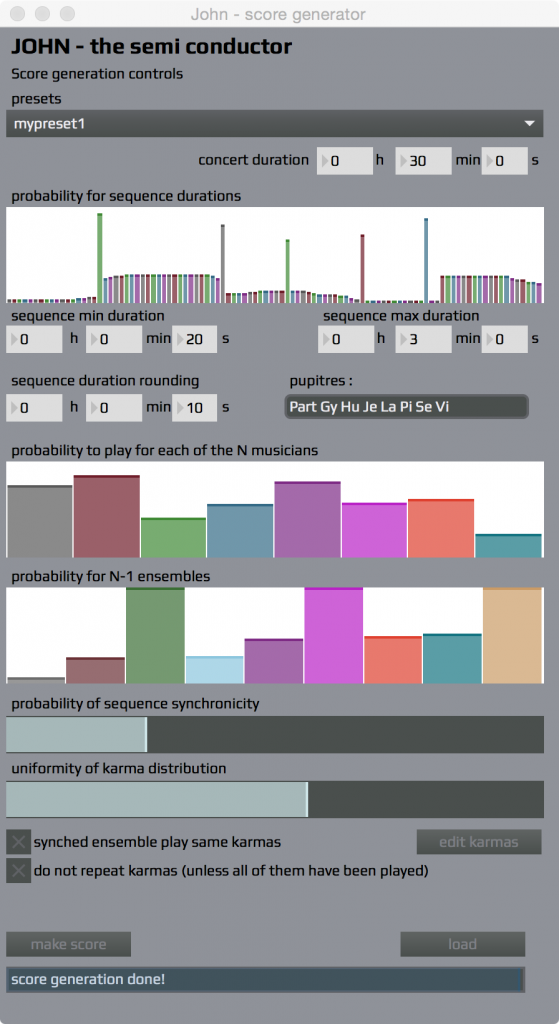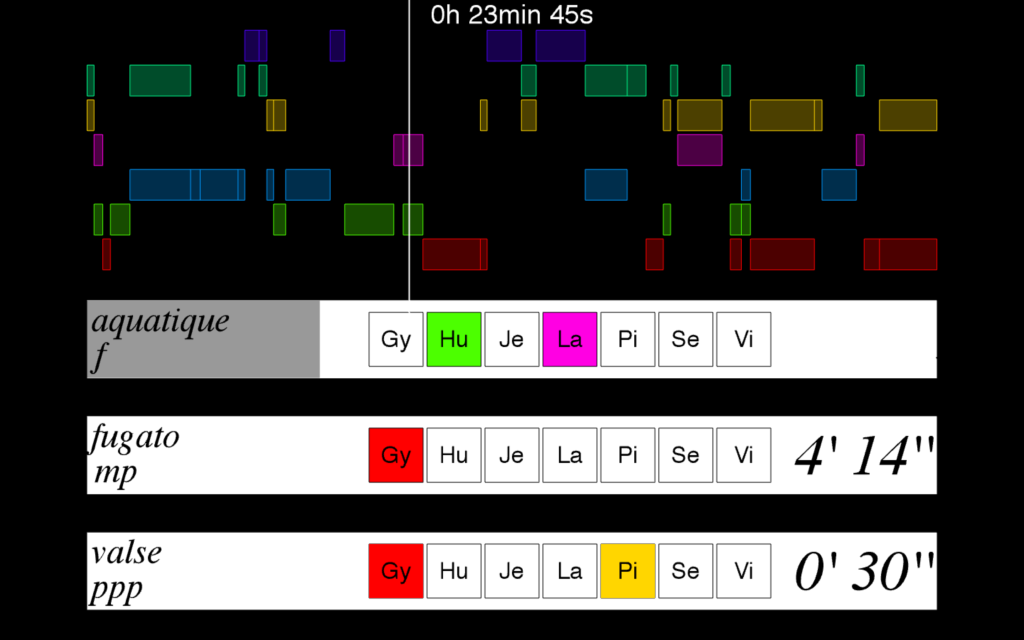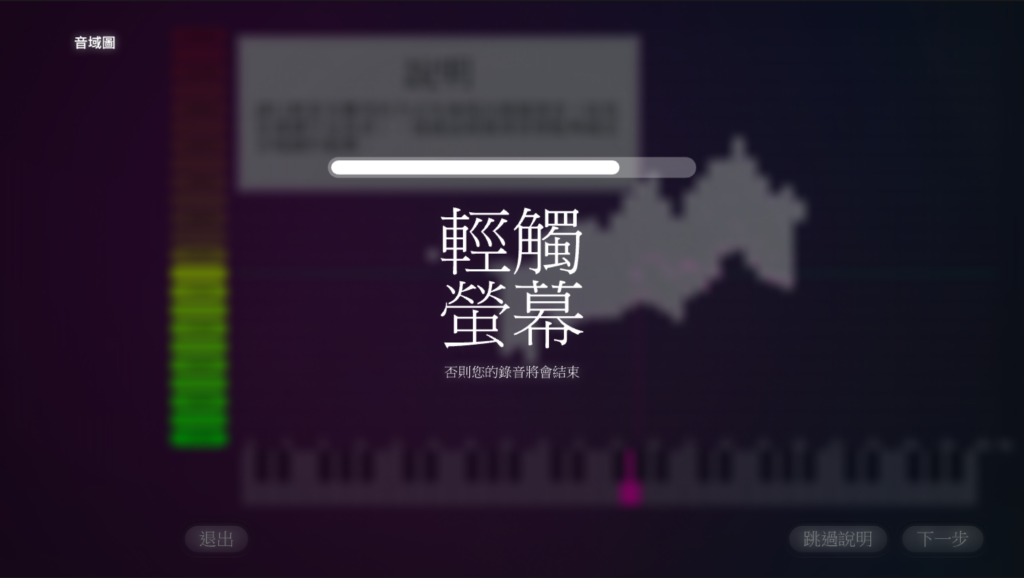John (“the semi-conductor”) is an open-source software designed to help collective free improvisation. It provides a constraint-based score generator and displays screen scores running on distributed, reactive web browsers.
The musicians can then concurrently edit the scores in their own browser. One of the original features of John is that its design takes care of leaving the musician’s attention as free as possible, relying on large colorful blocks and minimal text-data.
John is used by ONE, a ensemble playing improvised electro-acoustic music with digital musical instruments. John was presented at the TENOR’2018 conference in Montreal, CA [pdf here].
